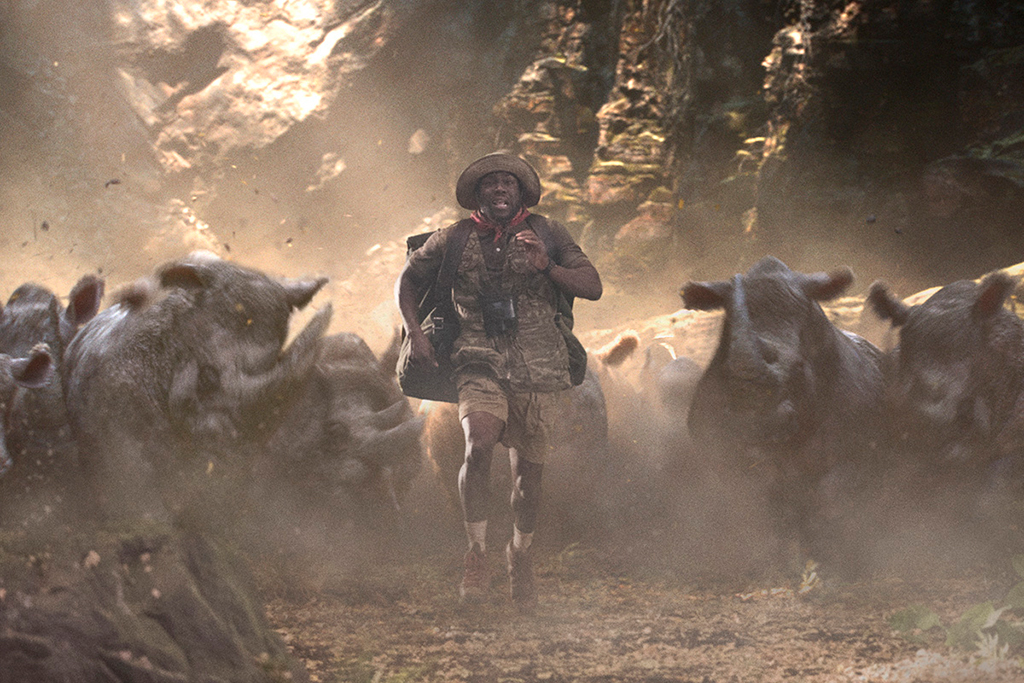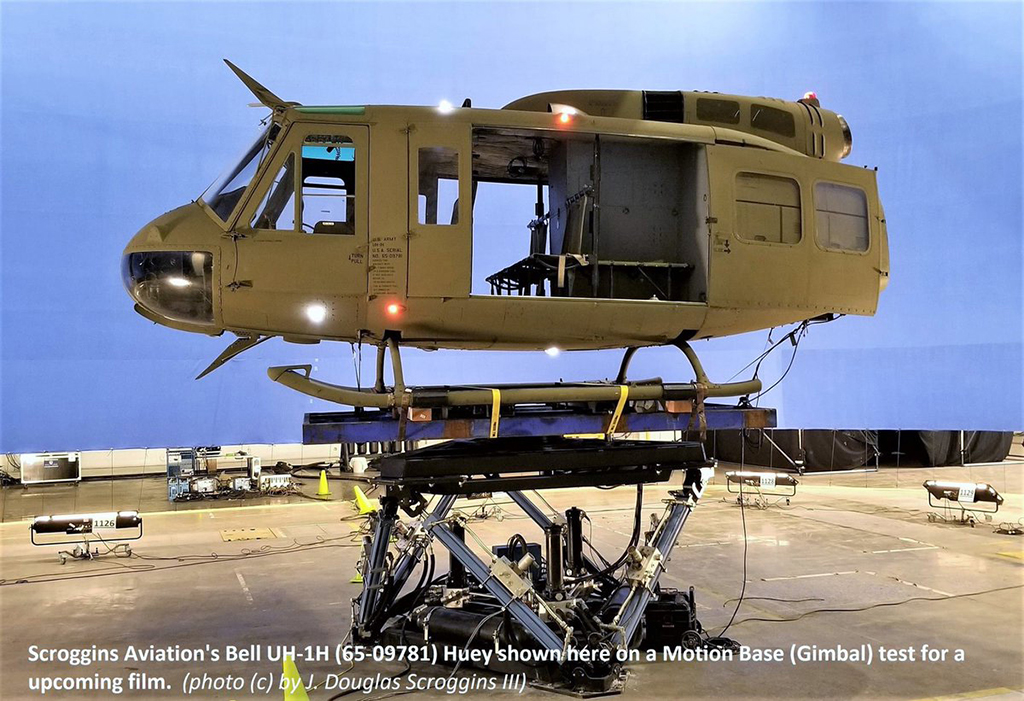By IAN FAILES
By IAN FAILES

Jake Kasdan’s Jumanji: Welcome to the Jungle is a continuation of the original 1995 film – a film that helped usher in a new wave of visual effects creature features. The sequel tells the story of a group of high school kids who are transported with new identities into Jumanji via an old video game.
Like the original, this new Jumanji is full of jungle animals, and one of the most intensive sequences involves a stampede of albino rhinos which come perilously close to stomping on the main characters while they fly low through a canyon in a helicopter. VFX Voice asked Visual Effects Supervisor Jerome Chen how that sequence was made.
Knowing that an elaborate CG environment, CG creatures and interaction with the helicopter would be required, a previsualization of the rhino stampede was worked on early by MPC. “The trick was to tie the motion of the helicopter to any CG motion,” says Chen. “In the end the lighting proved very challenging because we didn’t really know at the time how deep the canyon was or what kind of lighting environments it would be passing through, but we still wanted a dynamic lighting to happen on the actors to indicate the speed.”
“Basically you have a helicopter that can’t climb and is being chased by 14 rhinos, so you can allow yourself to get close to walls. And when a rhino basically strikes the back of the helicopter, you can create moments where you feel like you’re going to hit the wall, or basically nearly crash. So there’s a lot of elements of tension that are working for us.”
―Jerome Chen, Visual Effects Supervisor
Chen awarded the visual effects work to Iloura, which had delivered several canyon sequences for Mad Max: Fury Road and a number of CG animals in Game of Thrones, among other films. The team built the rhinos, canyons and helicopter for the scene, and made use of digital doubles, with live-action shooting mostly taking place on stages.
The stages incorporated a full-scale Huey helicopter fitted to a motion base that could move the aircraft a number of ways. The filmmakers also took advantage of a 35-foot Technocrane. “The combination of the two allowed for a lot of compound dynamic movement relative to the aircraft and relative to the walls,” says Chen.
“You get to have a lot of fun,” he adds. “Basically you have a helicopter that can’t climb and is being chased by 14 rhinos, so you can allow yourself to get close to walls. And when a rhino basically strikes the back of the helicopter, you can create moments where you feel like you’re going to hit the wall, or nearly crash. So there’s a lot of elements of tension that are working for us.”

“Basically you have a helicopter that can’t climb and is being chased by 14 rhinos, so you can allow yourself to get close to walls. And when a rhino basically strikes the back of the helicopter, you can create moments where you feel like you’re going to hit the wall, or basically nearly crash. So there’s a lot of elements of tension that are working for us.”
―Jerome Chen, Visual Effects Supervisor
Cinematographer Gyula Pados also designed a lighting scheme with robotic lights that moved around and incorporated very bright exposures of sunlight to play over the actors and set pieces. Iloura would then tie this lighting into their CG builds.
“It’s a fantastic sequence and was really difficult,” reflects Chen. “It took a long time to do those shots, just to try to tie the lighting between what would happen on a set piece, and then make it feel like the environment was also going through the same lighting cues.”